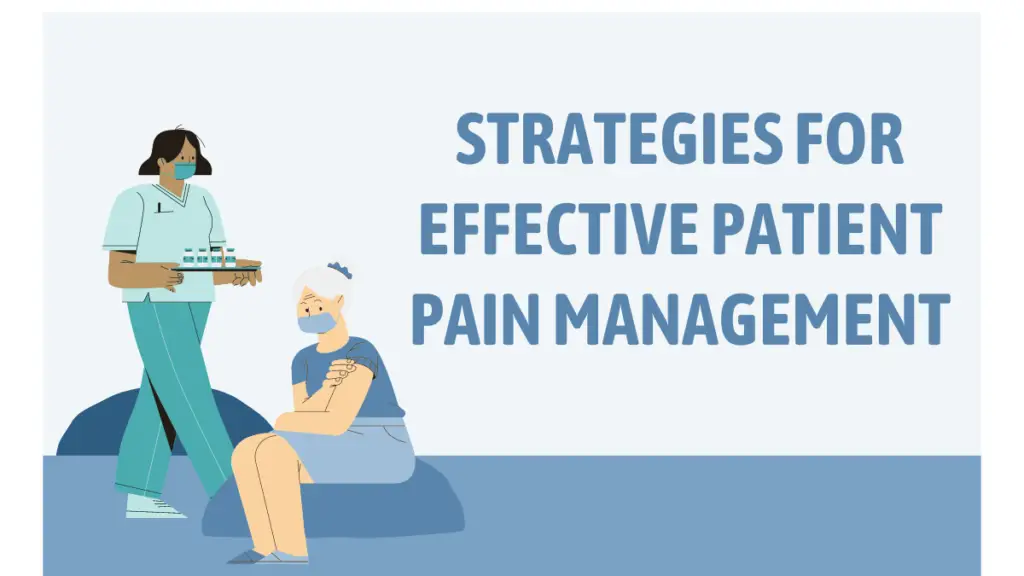In the realm of healthcare, one of the most pressing concerns is the effective management of patient pain. Whether acute or chronic, pain can significantly impact a patient’s quality of life, making it essential for healthcare providers to employ strategies that alleviate suffering while promoting overall well-being. In this comprehensive guide, we delve into the intricacies of patient pain management, offering insights, strategies, and evidence-based approaches to enhance patient care.
Understanding Pain Management
Defining Pain
Pain is a complex sensory and emotional experience that varies from person to person. It can be classified into two main categories: acute and chronic. Acute pain typically arises suddenly in response to tissue damage, injury, or illness and is often short-lived. On the other hand, chronic pain persists over an extended period, lasting beyond the expected healing time.
The Biopsychosocial Model
Effective pain management requires a holistic approach that considers not only the biological aspects of pain but also the psychological and social factors that influence an individual’s experience. The biopsychosocial model emphasizes the interconnectedness of biological, psychological, and social factors in shaping pain perception and response.
Data Table: Comparative Efficacy of Pain Management Interventions
| Intervention | Efficacy | Safety Profile |
|---|---|---|
| Pharmacological Therapy | High | Variable, Risk of Adverse Effects |
| Physical Therapy | Moderate to High | Generally Safe |
| Cognitive-Behavioral Therapy | Moderate to High | Generally Safe |
| Acupuncture | Moderate | Generally Safe |
| Massage Therapy | Moderate | Generally Safe |
| Mindfulness-Based Practices | Moderate | Generally Safe |
Strategies for Effective Pain Management
Multimodal Approach
A multimodal approach to pain management involves combining multiple interventions to target different aspects of pain. This strategy aims to maximize pain relief while minimizing side effects and risks associated with any single intervention. Components of a multimodal approach may include pharmacological treatments, physical therapies, psychological interventions, and complementary therapies.
Individualized Treatment Plans
Every patient experiences pain differently, necessitating the development of individualized treatment plans tailored to their specific needs and preferences. Healthcare providers should conduct comprehensive assessments to understand the nature and severity of the patient’s pain, as well as factors contributing to their pain experience. By taking a personalized approach, clinicians can optimize treatment outcomes and enhance patient satisfaction.
Nonpharmacological Interventions
Nonpharmacological interventions play a crucial role in pain management, offering safe and effective alternatives or complements to traditional pharmacotherapy. These interventions encompass a broad range of modalities, including physical therapy, occupational therapy, acupuncture, massage therapy, cognitive-behavioral therapy, relaxation techniques, and mindfulness-based practices. Incorporating nonpharmacological interventions into treatment plans can reduce reliance on medications and empower patients to take an active role in managing their pain.
Promoting Self-Management and Empowerment
Empowering patients to actively participate in their pain management can improve treatment outcomes and foster a sense of control over their health. Healthcare providers should educate patients about their condition, treatment options, and self-management strategies, encouraging them to set realistic goals and engage in activities that enhance their well-being. By fostering collaboration and shared decision-making, clinicians can build trust and rapport with patients, ultimately leading to better outcomes.
Conclusion
Effective patient pain management is essential for optimizing outcomes and enhancing quality of life. By adopting a multimodal approach, individualizing treatment plans, integrating nonpharmacological interventions, and promoting patient empowerment, healthcare providers can address pain comprehensively while minimizing risks and maximizing benefits. As we continue to advance our understanding of pain mechanisms and treatment modalities, it is imperative to prioritize patient-centered care and evidence-based practice in pain management.

